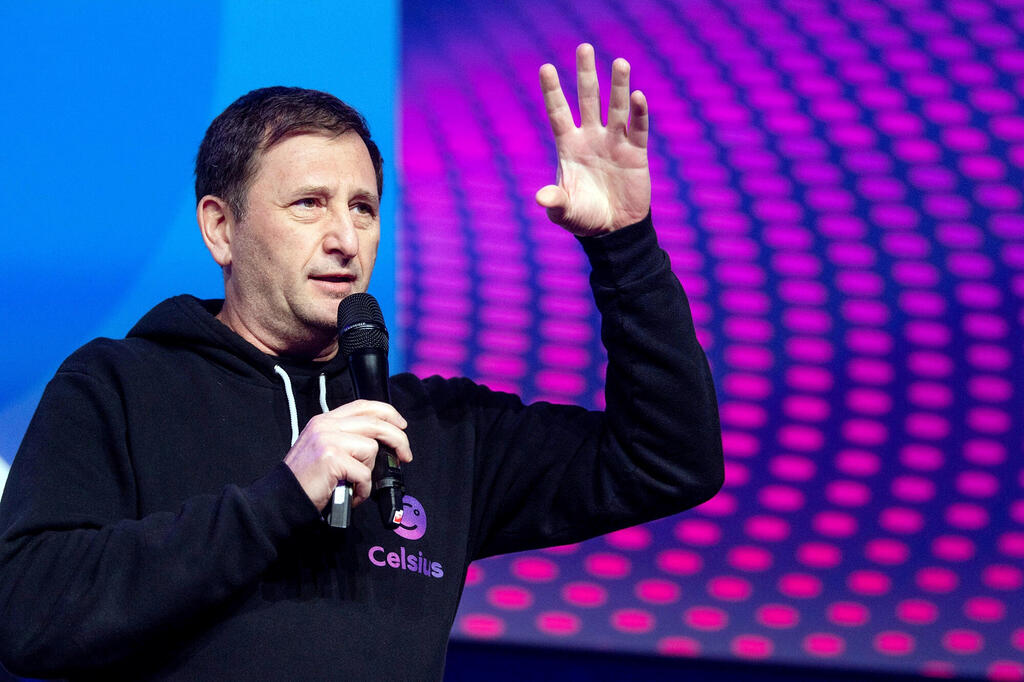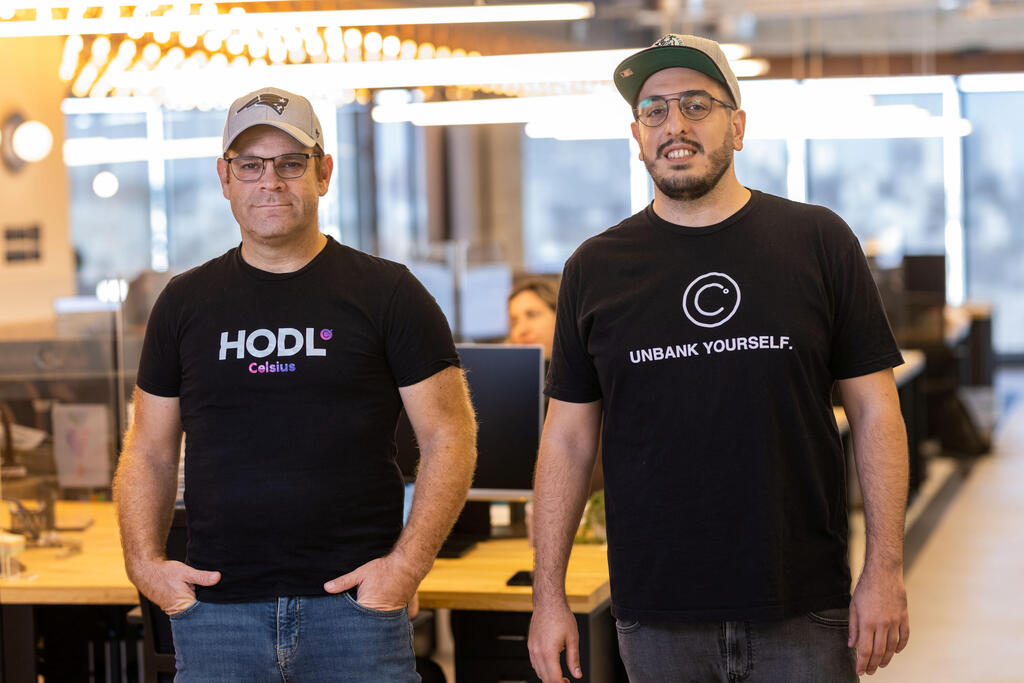
Temperature rising: A glimpse behind management’s door during the Celsius collapse
With the fall of the crypto company and the resignation of two of its founders, the problematic behavior of its executives becomes more exposed. A murky picture emerges of a company that doesn’t know how to manage risks or their customers' money, while managers withdrew millions while begging customers not to
"2022 is going to be a great year for Celsius," said Celsius co-founder Daniel Leon in a live AMA on January 7, 2022. "When I think back on Celsius' history I find it hard to believe it myself. I was thinking about maybe doing a documentary and someone said to me ‘no one will believe it anyway because it's too good.’ We have a great story to tell, and 2022 will be the year when - with your help - we will continue to tell this story around the world." In hindsight Leon could not have uttered a sentence further from the truth.
On October 4, the co-founder secretly resigned, without him or the company releasing an official announcement, only a week after his partner and CEO of Celsius - Alex Mashinsky - resigned as well. Both abandoned the bankrupt company they founded on the money of 300,000 customers they aggressively recruited and to whom Celsius owes over $4 billion. The resignation of the two is not accidental, and was done at a time when the legal process, saturated with submissions and reports, fundamentally challenges five years of building a narrative concerning the company, its business, and its successes, which the two diligently established in interviews. For the first time, a reasoned alternative image is offered to the narrative they worked to establish. Celsius is not a healthy, solid and profitable crypto company that fell victim to market conditions and rivals who tried to bring it down, but one that does not know how to manage risk, accounting or customers’ money. Their story is one of a continuous chronicle of collapse and financial infeasibility.
It all starts with Celsius' business model. Its big promise was always to give loans at zero interest rates and return on deposits at pulsating interest rates. The question mark over the company always hovered around the exceptional and guaranteed returns, and Mashinsky, Leon and other managers were forced to answer questions regarding these interest rates.
"We have to work hard on the deposits. This is how we get paid," Mashinsky said on August 13, 2021 at the weekly meeting with customers, "the return we generate on the deposits is more than 8% on the money we borrow from you. It works well, we have been doing it for four years and Celsius is the only one offering it because we are much more efficient. I assure you that Celsius makes money, it's a win-win for everyone."
When Leon was asked about it, he always replied in the same way - everyone can do this, but we are the only ones who do it. "When we come to people and say 'Take an interest rate of 5%-7% and even 12%,' everyone shouts that it's a pyramid scheme," he told the Calcalist supplement in 2021, "but the global financial system can also give that interest rate, but doesn't want to."
"I was on a panel with thousands of viewers and they didn't believe me that we don't charge commissions, they think we're cheating," Mashinsky said at an AMA on December 17, 2021. "After 20 or 30 years when people earn less and less (from bank deposits), it's hard for them to believe that the return is real, it's like Stockholm syndrome.”
Celsius was so confident that two years ago the company claimed it was profitable. The first time was in a press release in March 2020 where it reported that "the company has been profitable since the beginning of 2020.” In June 2021 Mashinsky tweeted that "Celsius is profitable and always works for the benefit of the users.” In November 2021, the company's VP Roni Cohen-Pavon told the Calcalist supplement that they "have been profitable for more than a year."
A group of regulators from 40 different states in the U.S. came to a different conclusion. In a court filing from September 7, the Vermont Securities Authority wrote that "a preliminary analysis of financial records provided to the group of multistate regulators indicates that Celsius experienced massive losses in the first seven months of 2021. It also experienced two significant negative events in June and July 2021." Not only that, but "Celsius admitted that the company never earned enough revenue to support the returns paid to investors."
That is, if we are to trust the conclusions of the regulator from Vermont - Celsius has never lived up to its claim that it manages to generate the dream return for customers through its business model. "This shows a high level of financial mismanagement and also indicates that, at least at certain points in time, returns to existing investors were probably paid with assets from new investors." Without using the exact phrase, Vermont regulators described Celsius as a pyramid scheme.
At the heart of the business model rests the native currency of the company - CEL. The currency was supposed to be the "backbone" of the company. The idea was that customers would deposit crypto-assets and receive a return in CEL, then the company would buy the tokens back in the market using the profits it generates and this was supposed to increase the price of CEL. Mashinsky called it the "Celsius flywheel", because the more the company earns - the price of CEL will rise, the returns the company will offer will be more attractive, which will attract new and returning customers.
They minted the tokens (650 million) in 2018 and sold 50% for $0.2. 16.9% of the tokens (117 million) were kept in the company’s treasury and it declared that it would never sell them. This move had far-reaching implications. The company aggressively curbed and managed the coin supply as the largest holder of CEL and its executives were dominant sellers of CEL.
Why does it matter? Because today it is known that the company included the tokens in its balance sheets. The company had almost no cost in minting the tokens in 2018. However, over the years those same tokens reached $8 per token. They included these tokens in the company's balance sheet, a figure the company leveraged as evidence of its solid financial position. At the coin's peak, the company held more than a billion dollars worth of tokens. Could Celsius ever redeem these tokens at this price? If the company started flooding the market with millions of tokens that had never been traded, it is likely that the price would fall.
How did the tokens increase in price so spectacularly? In November 2021, Leon explained to "Globes": "The surge of the currency is significant mainly because it shows the community's trust in our model. It is part of a flywheel, where an increase in the price of the currency increases the demand for the currency, and the increase in demand increases the price."
"80% of the coins we distribute are held in wallets and not sold," Mashinsky said in a broadcast in April 2020, "and this is part of the reason why the CEL price performed well." A year and a half later, he already assured customers at an AMA, that "CEL is the currency of the future.”
But the court records combined with studies of crypto companies claim otherwise. According to research firm Arkham Intelligence, as of July 2019, Celsius had invested $350 million in the purchase of its tokens. According to a lawsuit filed in July by Celsius' investment manager, Jason Stone of KeyFi, between February and November 2020, Celsius used 4,500 bitcoin coins (about $91 million at the time) deposited by the company's customers to buy CEL coins on the open market. At that time, the price of CEL jumped from about 17 cents to $2. The regulator from Vermont summarized these events simply: "Celsius and its management engaged in improper manipulation of the price of the CEL token, including by using the proceeds of investor deposits for the purpose of purchasing CEL tokens and increasing its position in CEL."
Why did the company so aggressively purchase coins, even though it was the largest holder of the coins in the market anyway? Apparently in order not to increase the supply of traded coins and erode the price of the token. What does this say about the CELs that were on the company's balance sheet? Quite a bit . The value of the 117 million coins in the company's treasury alone jumped from $19.9 million to $234 million (Mashinsky himself, who owned 45 million coins, also benefited from the price increase). Thus the company created an appearance of having a tidy balance sheet. According to Celsius, in May-December 2021, it increased its holding by 41.9 million tokens, with the price of the token increasing during that period from $3.9 to $8.
For a new and interested institutional investor, it seems that this is an impressive balance sheet of billions of dollars. In fact, this is such a significant inflation that, according to Vermont’s securities authority, if you subtract the holding in CEL from the company's balance sheets, its liabilities have exceeded its assets since February 2019. Not that it changed anything. In October 2021, Celsius announced the raising of $750 million from two big institutional investors.
Celsius milked the recruitment to the last drop. The investment by a Canadian pension fund served as evidence of Celsius' stability. "This is exactly the purpose of the recruitment - to kill all doubts," Leon told Calcalist in November 2021. "We have these investors, who have much more to lose than I do, and they put their name on Celsius. It's already close to my dream."
"We passed tests of the adequacy of the major players in this market," he told the ICE website not long after, "and everyone is satisfied that we are stable enough." Mashinsky played the same tune at the AMAs in November. "People tell us - 'We don't know if the platform is safe', and I say - Celsius raised $750 million. How much did the company you put your money in raise?.” In December, he was even bolder in a conversation with the Kitco website: "Other countries and regulators checked Celsius. They came back: 'Thumbs up, no problem...', and we just raised $750 million. So, our investors dug deep and saw that everything will be kosher - No problems".
Affidavits received by the group of regulators point to a different reality. "Celsius admitted, through its CFO Chris Ferraro, that the company's insolvency began with financial losses in 2020 and into 2021." This evidence, along with the recognition that Celsius's balance sheet without CEL currency showed greater liabilities than assets, casts a problematic light on the due diligence of The Canadian pension fund. When the fund wrote off its investment in Celsius last August, the fund’s CEO admitted, between the lines, that "due diligence is not a guarantee of success."
In November 2021, Cohen-Pavon told Calcalist that the company is in such good shape not only because of its efficiency, but because it is a model of risk management which he called the company's "secret sauce". But a lawsuit filed by Stone from the investment company KeyFi raises the question of how Celsius defines risk management. In the lawsuit, Stone claimed that from August 2020 he managed hundreds of millions of dollars of Celsius’ customer funds, based on an oral agreement and a handshake between him and Mashinsky. Stone managed these funds by remotely connecting to the company's servers through a VPN service. That's it. Stone was brought to the company to generate returns in what is known in the industry as yield farming. Stone made sure to invest in various relatively insignificant decentralized projects and "ShitCoin" coins, a nickname for coins with no or negligible value.
In August, Celsius filed a counterclaim alleging that Stone stole millions of dollars from the company. "The accused was not only incompetent, but was also a thief," Celsius argued. In the lawsuit, they did not deny the facts. Why did Celsius deposit hundreds of millions of dollars in the hands of someone it sees as an incompetent crook? Only Celsius knows the answer to that. What's more, we know that the choice to act in this way only created more problems for Celsius. According to Stone, because he exchanged coins deposited by customers for his investment strategy, the company had to buy back those coins when customers sought to withdraw their assets. At that time, the market knew a continuous rally, so Celsius allegedly had to buy back the coins on the open market at a price higher than the deposit price, which contributed to the deepening hole in the company's balance sheet.
In May, Celsius’ problems began to be revealed. After the collapse of the TerraLUNA project, rumors began in the crypto market that many Celsius funds were invested in the project. Users began withdrawing funds from the platform in what is known as a "run on the bank." Celsius tried to slow down the panic and claimed that the company was not harmed by the collapse of the project, the company's risk management is excellent and the losses were avoided. On May 11, Mashinsky tweeted that "Celsius did not experience any significant losses…All funds are safe." However, preliminary internal financial records provided by Celsius to a group of regulators show that on May 2-12 the company experienced an unrealized loss of almost half a billion dollars. The regulator from Vermont concluded that Mashinsky tweeted and made promises while "the company was insolvent and the depositors' money was not safe.” But Mashinsky told a different story. When Calcalist contacted the company for a response in early June regarding the many withdrawals from the platform and the danger to its stability, it was claimed in the response that these were "malicious rumors" and that the company would continue to "focus most of our efforts on improving the platform, securing users' funds, and easing the current withdrawals." A week later the company already froze the withdrawals. A month later it already filed for bankruptcy and discovered that its balance sheet had a hole of $1.2 billion.
On October 5th, Celsius submitted a financial affidavit, which included, among other things, the movement of the various currencies held by the company's managers on the Celsius platform. The report, which stretches back to July 2021, reveals that Celsius managers held active accounts, with micro-deposits made on an almost daily basis. All deposits were made to the company's "Earn" account, which includes transferring ownership of the coins to the company for a weekly double-digit return. However, in May the direction of the activity changes. Although the micro-deposits do not stop all the time, some large and unusual movements were made. First, and through a few single strokes, senior executives of the company - Mashinsky and Leon - transferred millions of dollars from private Earn accounts associated with them, into Custody accounts, a product that the American regulator required Celsius to build to protect American customers and is only accessible to U.S. residents. But even these assets didn’t remain long in custody accounts, and the two withdrew $13 million in crypto assets between mid-May and June 18.
Mashinsky, who made his transfers and withdrawals on May 27, tweeted on May 29 a desperate call to the general public: "I will personally give $1,000 to a new Celsius user, if you show that you opened an account and put it on HODLing mode (a mode that prevents withdrawals) to build your financial freedom.” On the day Mashinsky and Leon start transferring funds and withdrawing—May 27th—Mashinsky held one of his weekly AMAs, where he explained to viewers that they can earn crypto if they refer their friends to the platform. Immediately afterward, Mashinsky promised, “I have all 40 million CEL coins, we are here for the long term, nothing has changed." The truth was that about two weeks earlier Mashinsky withdrew about $10 million in crypto, while his partner Leon withdrew about $3.1 million. Mashinsky and Leon resigned from the management of the company (on September 27th and October 4th respectively) before these financial reports were submitted to the court.
On June 13th, the same senior officials decided to stop all withdrawals from the platform. In the documents submitted by the company to the court, Celsius explained that the freeze is intended to "prevent certain users - those who were the first to act - from receiving full payment, while leaving other users behind." Three months later the question arises as to whether the founders of the company were not themselves "the first users to act.”















